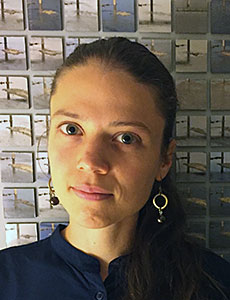The origins of an ecosystem: Rooting the African Savanna in the middle Miocene
The modern African Savanna, composed of C3 trees and C4 grasses, is at risk of woody encroachment in the near future due to increasing pCO2. Atmospheric CO2 last exceeded 400 ppm during the Middle Miocene, but the composition of northwest African vegetation during this period is unknown. Under the different pCO2, fire and hydrologic regime of the warm Middle Miocene, tropical C3 grass savannas may have been a stable ecosystem state. Here, we propose to investigate the origins and antecedents of the Miocene African Savanna using novel biomarkers for grass abundance, fire regime, and precipitation, recovered from ODP site 659.
Biography
I discovered my interest in the geosciences through a circuitous route, which includes an undergraduate degree in linguistics and five years of teaching experience abroad, before returning for a second degree in geology at the University of Cincinnati. At UC I had the great good fortune to work with professors Aaron Diefendorf and Thomas Lowell, who introduced me to the world of organic geochemistry and paleoclimatology. I am currently pursuing a Ph.D. in the Ocean Sciences Department at the University of California, Santa Cruz, under the advisement of Pratigya Polissar. We will be working on constraining African vegetation-climate interactions in the Miocene, and investigating the potential for fire to act as a feedback and maintenance mechanism in ancient woodland and savanna ecosystems. The wonderful and encouraging research community I have had the opportunity to participate in, both at UC and UCSC, has greatly strengthened my interest in paleoecology and biogeochemistry, and I am very excited to devote myself to this research project with the support of the Schlanger Fellowship.







